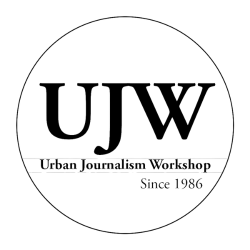By Melanie Aguilar-Rojas
UJW Staff Writer
With high school graduation finally over, many students are looking forward to a new life on a college campus. For some of these students, it may be their first time in the United States.
Hui Xin will experience that this fall at Smith College in Northampton, Mass.
“Studying abroad in the U.S. is quite rare among Malaysians,” Xin said via email from Malaysia. “Many Malaysians who study abroad prefer to go to the UK or Australia. However, I was drawn to the liberal arts curriculum [in the US] and the ability to explore different fields before settling on one major.”
Xin is going to join the thousands of international students studying in the U.S. at all levels of higher education.
In 2011, nearly 765,000 international students were enrolled in colleges and universities nationwide, according to the National Center for Education Statistics. Only a decade earlier, there were more than 582,000 international students.
Xin applied to 12 schools including Boston College, the College of William and Mary and the University of Pennsylvania. While Xin was accepted to several universities in the U.S., she admitted that her application process to get to that point was a challenging one.
“Resources for us to get through the application process are very limited,” she said. “I’ve read books on admissions and also attended a session organized by a group of current Malaysian students who are studying in the U.S, who wanted to help prospective Malaysian students to understand the education system in the U.S.”
Advanced recruitment efforts by universities and other organizations can also account for the increase of international students, such as Education USA, a program funded by the State Department to give prospective international students information about applying to U.S. colleges and universities.
“We have folks who are overseas that are somewhat related to the universities and they are called regional advisors,” said Josué Barrera, spokesman for the State Department. “The local audience or foreign audience can look at that person that works in their region as somebody who can help them identify domestic universities that can support their area of academic interests.”
Some factors that students may take into account are academic reputation, affordability and location.
A popular US destination is Washington, D.C. Last year, the Nation’s Capitol had a total of 8,419 international students in its higher education institutions, according to the Institute of International Education information resource called Open Doors.
George Washington University has 3,058 international students, making it the institution with the highest number of international students in the city. These students come from 122 countries and make up 12 percent of the student population at the school, according to Kristin Williams, Associate Provost for Graduate Enrollment Management at George Washington.
Williams has made presentations abroad for prospective international students.
“In my conversations with both prospective undergraduate and graduate students, the big thing is the academic reputation of our institution, our faculty, and academic programs and this is supported by the major survey out of a group in London called i-graduate,” Williams said.
The International Graduate Insight Group (i-graduate) tracks and benchmarks over 1,400 colleges and universities around the world. Its survey called the International Student Barometer “tracks decision-making, expectations, perceptions and intentions of international students from application to graduation; providing global, regional and customised benchmarks,” according to the i-graduate website.
While each higher education institution is different, many U.S. colleges and universities
share the common feature of a well-rounded education to give students the flexibility to gain skills in multiple areas.
“At the undergraduate level we’re the premier place for people to get a very strong liberal arts degree,” Williams said. “A lot of the undergraduate programs around the world are very focused [and] topic-specific.”
Graduate studies in the U.S. also have their own advantages.
“We have areas of graduate study that aren’t readily available in their country,” Williams added. “Sometimes they are not able to go on and study certain things. We also tend to offer more customized areas of study and the flexibility to focus in different areas and take electives.”
Other incentives to study in the U.S. include research opportunities for undergraduate and graduate students as well as internships that might not be available in their countries.
Many colleges and universities also attract a large number of international students by being located in cities or areas where a field is popular.
American University ranks third on the institutions with the highest number of international students in Washington, D.C. In 2012, it had 1,325 international students enrolled, according to the Institute of International Education. This year, American University received almost 2,100 applications from U.S. citizens living overseas and international students combined, according to Kristina Thompson, Associate Director of International Student and Scholar Services at American University.
“The fact that we have a very diverse study body really makes a big difference,” Thompson said. “They will feel like they’re going to be understood here and that there will be other people maybe from their country or speaking their language or at least other international students who are going to get what they are going through.”
Bianca Lagrutta enjoyed her first-year experience as a college freshman in America studying International Studies at American University. As a young girl, she knew she wanted to study something in the international relations field.
“It’s not really a major or career that is really well-known in Panama, so of course I was looking outside of Panama for school and D.C. is the center for everything IR related,” said Lagrutta, who was born in Panama and lived in several locations around the world growing up. “You really don’t feel like you’re secluded, or treated in a weird, special way.”
Students such as Xin and Lagrutta are what drive recruitment efforts and support networks for international students.
“We are creating international leaders, people who we will be able to work with because they understand us and they have experienced our lifestyle and vice versa,” Barrera said. “Hopefully, that creates an understanding that allows us to work together and create stable societies all around.”


